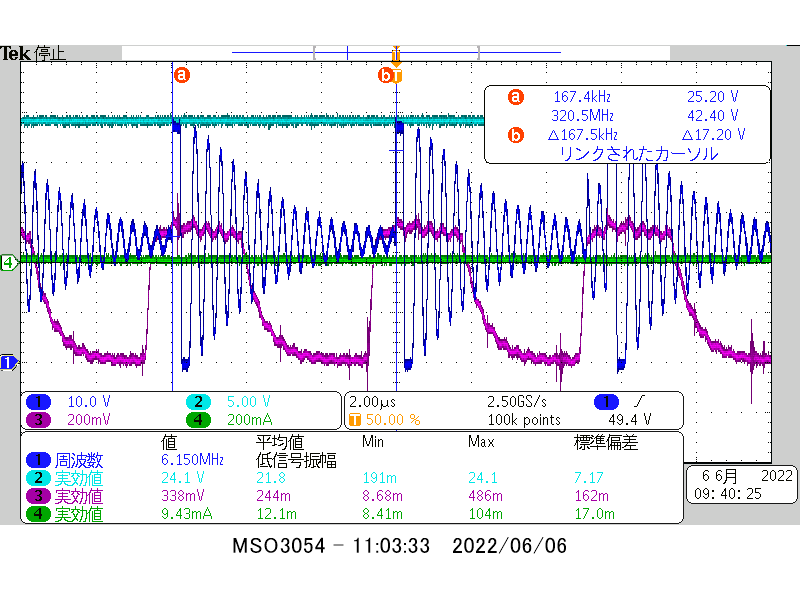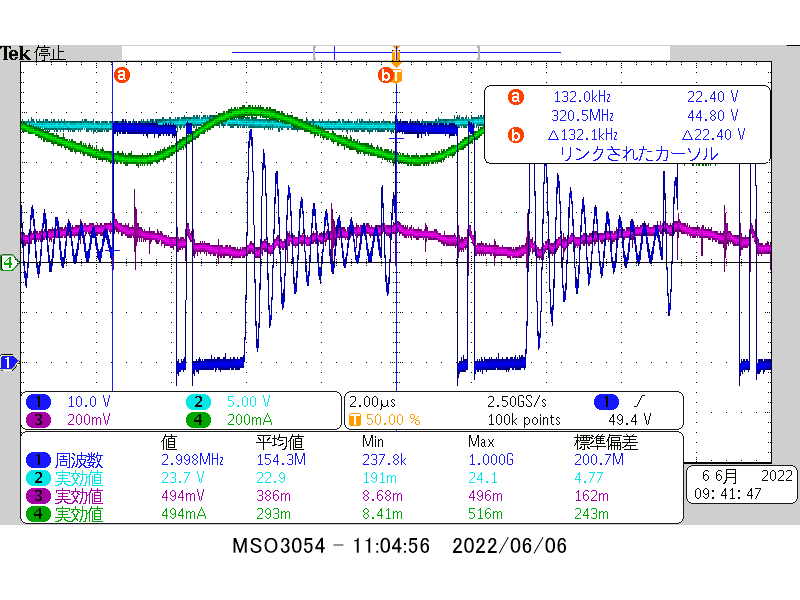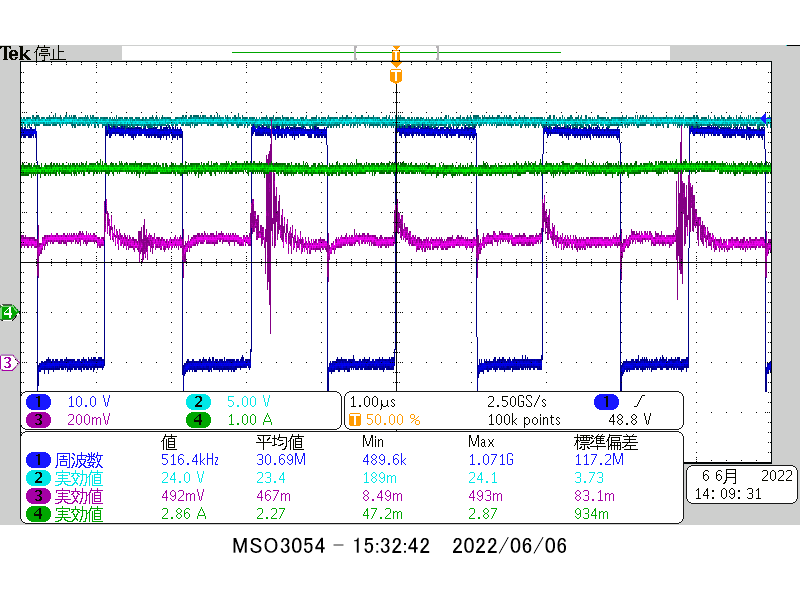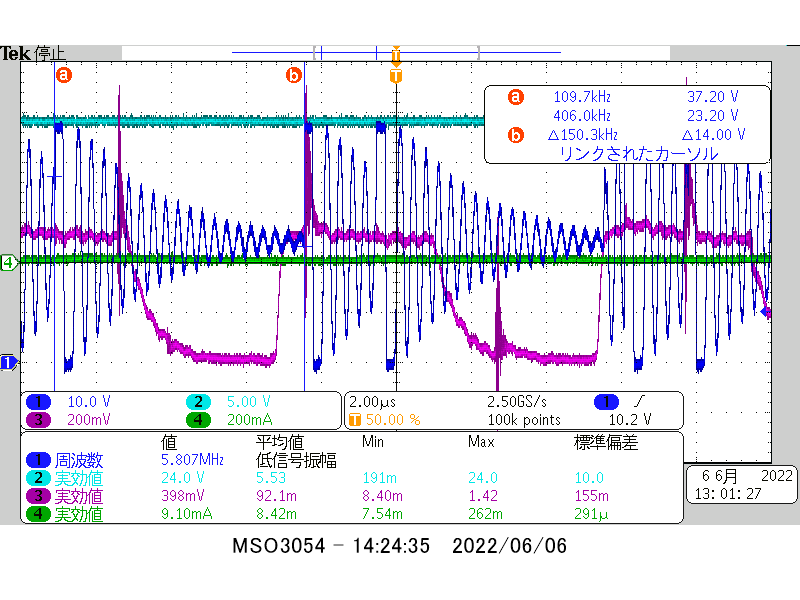The following circuit is prototyped.
Vin = 48V
Vout = 24V
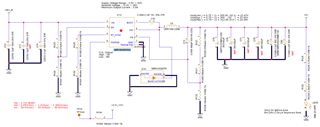
From the measurement results, the output voltage decreased according to the load.
100mA = Vout: 24.1V
500mA = Vout : 22.9V
1ch = Vin
2ch = Vout
3ch = Iout
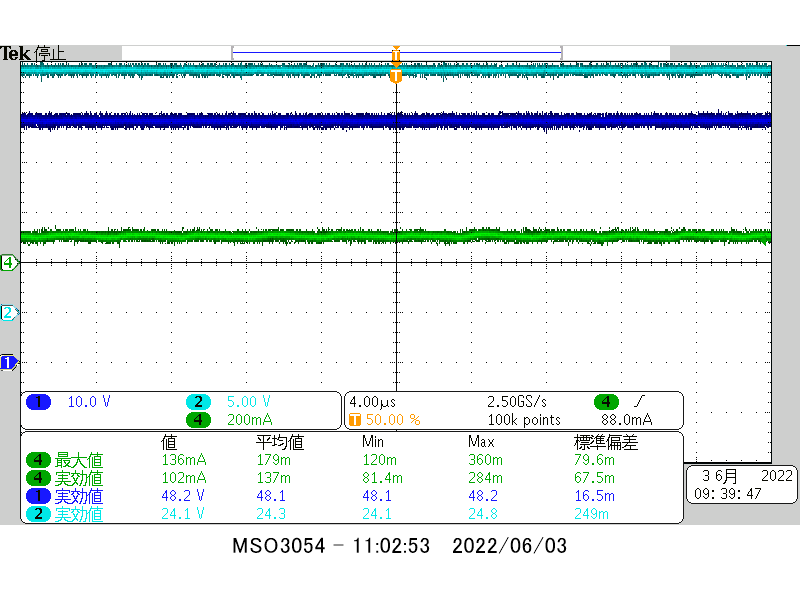
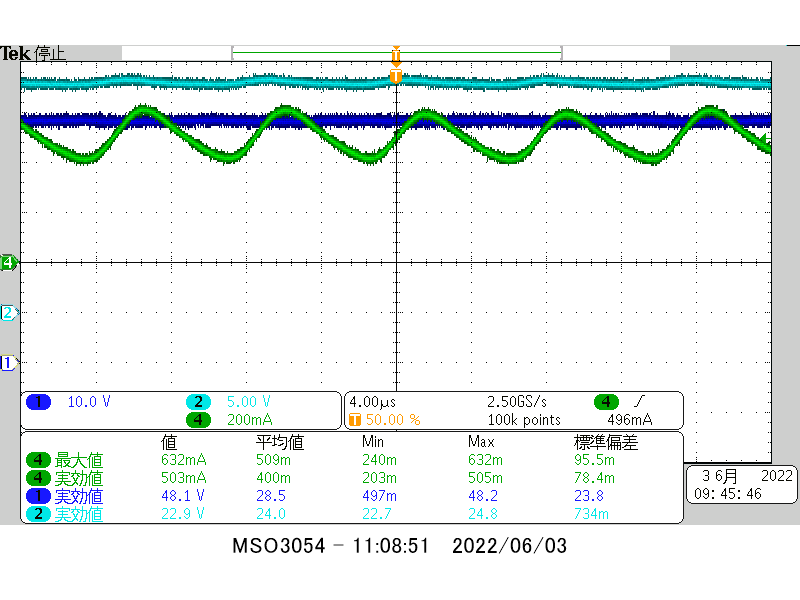
If Vin=48V, Vout=24V, Iout=3A, and Temp=30°C are set in "WEBENCH", then Cff=560pF, it was better to change to 220pF.
After making this modification, I re-measured, but even under the condition of Iout=1A or so, Vout=22-23V.
Please advise me where I should make the correction.
Best regards .


